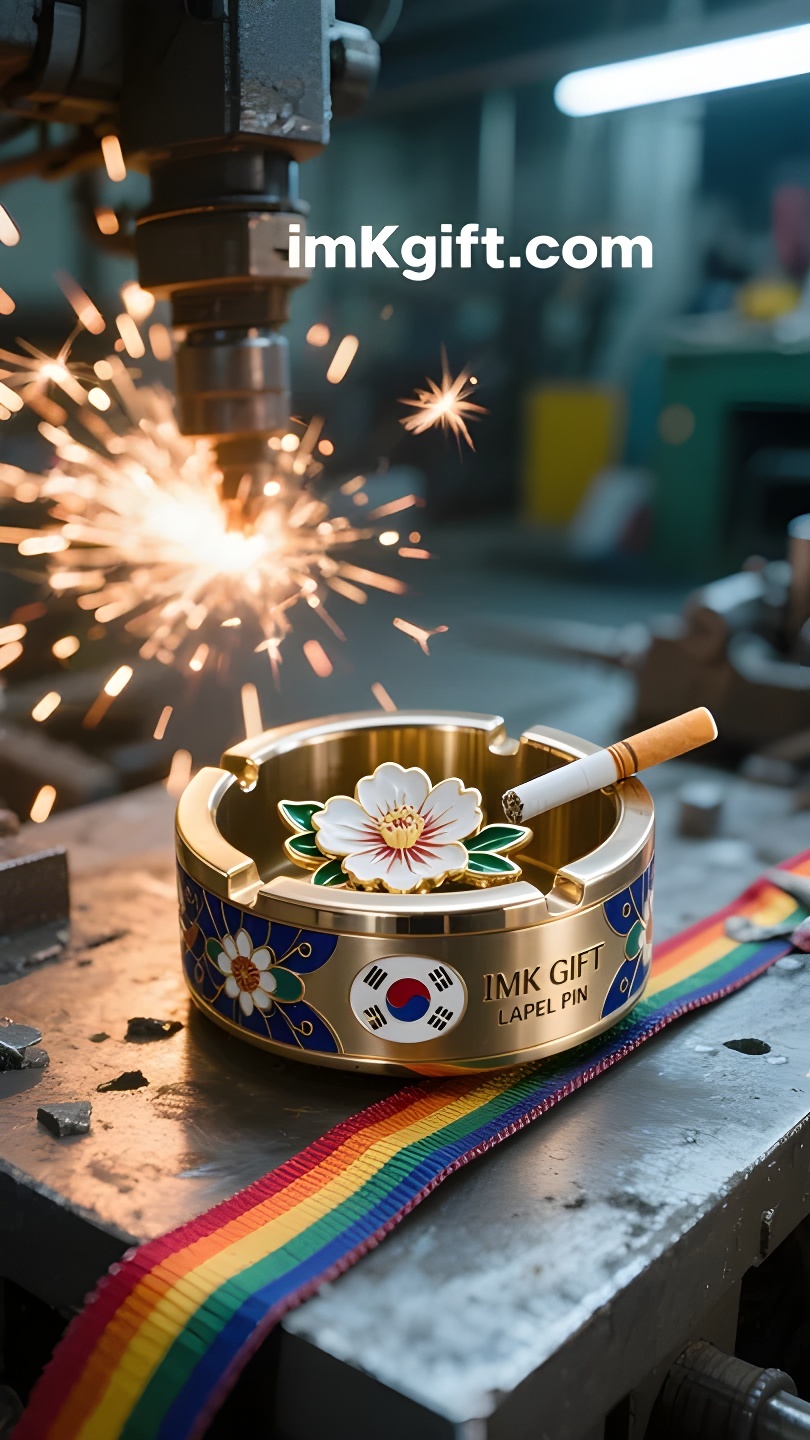in996-재-속에서-피어나는-무궁화-상처에서-다시-태어난-민족정신
▼
8월 15일, 광복절 종이 울려 퍼지고 태극기의 태극 문양과 무궁화 토템이 서로 어우러졌습니다. 태극의 음양이 끊임없이 흐르는 모습은 전쟁 속에서도 이 땅이 물려받은 민족의 회복력과 같습니다. 무궁화 꽃 재떨이는 이러한 정신을 가장 시적으로 구현한 작품입니다. 평범해 보이는 재떨이는 청자를 입힌 무궁화 꽃 모양으로 재탄생했고, 꽃잎은 마치 열반처럼 활짝 피어났습니다. 재가 꽃의 심장에 떨어지면 탄화된 잔해와 도자기의 따뜻한 광택이 미묘한 대화를 나누게 됩니다. 광복절이 기념하는 역사적 상처처럼, 전쟁으로 타버린 재는 결국 새로운 생명을 키우는 흙이 되었습니다. 재떨이 바닥에 새겨진 “무한의 꽃(Infinite Flower)”이라는 문구는 “아침에 피고 저녁에 지는, 끝없는 생명”이라는 히비스커스의 특징과 일맥상통하며, 가장 깊은 고통 또한 시간이 흐르면서 영양분으로 변할 수 있음을 일깨워줍니다. 현대 젊은이들이 재떨이를 두드리는 선명한 울림은 북을 두드려 새벽을 깨우던 우리 조상들의 끈기와 같습니다. 이 재가 담긴 용기는 마치 폭풍을 견뎌낸 히비스커스가 여전히 우아하게 꽃을 피우고, 연기와 먼지로 뒤덮인 도자기가 시간의 따스한 광채를 드러내듯, 삶의 뜨거운 고통에 더욱 관대한 자세로 맞서야 한다는 것을 가르쳐줍니다. 복원은 역사의 한 줄기일 뿐만 아니라, 상처를 강인함으로 승화시키는 모든 평범한 이들에게 영원한 과제입니다.
On August 15, the bells of Liberation Day rang out, and the Tai Chi pattern on the Korean flag and the hibiscus flower totem complemented each other. The eternal flow of Tai Chi’s yin and yang is just like the national resilience that this land has inherited despite the war. The hibiscus flower ashtray carries the most poetic embodiment of this spirit. The seemingly ordinary ashtray is reshaped into the shape of a hibiscus flower with celadon, and the petals are in full bloom like nirvana. When the ash falls into the heart of the flower, the carbonized debris and the warm luster of the porcelain form a subtle dialogue – just like the historical scars commemorated by Liberation Day, the ashes burned by the war eventually turned into soil that nourishes new life. The words “Infinite Flower” engraved on the bottom of the ashtray are in line with the characteristics of hibiscus “blooming in the morning and falling in the evening, endless life”, reminding us that the deepest pain can also be precipitated into nutrients in time. The crisp echo of contemporary young people knocking on the ashtray is just like the persistence of our ancestors to wake up the dawn by beating the taiko drum. This container of ashes teaches us to face the burning pain in life with a more tolerant attitude – just as the hibiscus still blooms gracefully after weathering the storm, and the porcelain covered with smoke and dust reveals the warm brilliance of time. Restoration is not only a node in history, but also an eternal task for every ordinary person to transform scars into strength.
8月15日的光复节钟声里,韩国国旗上的太极纹样与木槿花图腾交相辉映。太极阴阳的永恒流转,正如这片土地历经烽火却始终传承的民族韧性。而木槿花烟灰缸承载的,恰是这种精神最诗意的具象。
看似平凡的烟灰缸,以青瓷重塑木槿花形,花瓣盛放如涅槃之姿。当烟灰落入花心,碳化的碎屑与瓷器温润的光泽形成微妙对话——正如光复节所纪念的历史伤痕,那些被战火灼烧的灰烬,最终都化作滋养新生的土壤。烟灰缸底部镌刻的”无穷花”字样,暗合木槿”朝开暮落,生生不息”的特性,提醒我们:最深的创痛也能在时间中沉淀为养分。
当代青年轻叩烟灰缸的清脆回响,恰似先辈们敲击太鼓唤醒黎明的执着。这个容纳灰烬的容器,教会我们以更包容的姿态面对生命中的灼痛——正如木槿历经风雨仍保持优雅绽放,被烟尘覆盖的瓷器反而透出岁月打磨的温润光华。光复不仅是历史的节点,更是每个普通人将伤痕转化为力量的永恒课题。
▼
Contact Us
📞 Tel: +0086-760-85286839
📧 Email: sales3@imkgift.com








